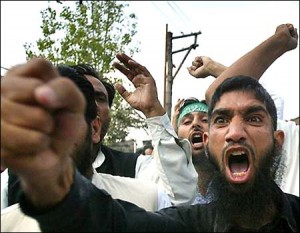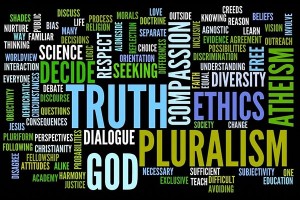The two words of the blog post’s title describe two very different ways of being and doing church. An inclusive church is one which welcomes all types of people, people who might otherwise be rejected for reasons of class, race, sexual orientation or age. Such a church tries, sometimes with difficulty and cost, to live out Paul’s statement that ‘there is neither Jew nor Greek, slave nor free, male nor female, but all are one in Christ’.
Exclusivity in Church presents a quite different vision of what it is about. For exclusive Christians, there is placed a great priority in ensuring that those allowed in church are worthy or pure enough to be there. They will also all have passed through a common conversion experience of ‘giving their heart to Jesus’. They will then be examined to see if they believe a series of statements connected with Christ, his sacrificial death and the need to trust divine revelation revealed in the Bible. They are then believed to be part of a redeemed humanity which, so their church informs them, is saved and destined for eternal life with God in heaven.
This second way of being church is linked to a world view that places a great gulf between good and evil. Human beings are engaged not only with defeating temptation and evil in their lives but also they are called to fight in the cause of righteousness against the forces of evil in the world. The powers of evil are believed to be full of lying and deceit and so exclusive Christians are encouraged to be suspicious of everything and everyone who is not closely identified with their cause. Even those who call themselves Christian must be regarded with, at best, suspicion if they do not speak in the same way as the exclusive Christians. They must be rejected if they allow people who are ‘sinners’ to be part of their fellowship, especially homosexuals. In some places Christians who submit to the ministry of female clergy are also to be shunned.
One of the strengths of this, admittedly extreme, presentation of conservative Christianity is that it is so counter-cultural that those who support it are paradoxically made to feel special. Because they feel the irritation and even hostility of those around them, they have to cling together for mutual support and protection. That closeness is a source of warmth and strength. They also find consolation from the passages in Acts which describe when Christians are persecuted. If we are persecuted, so the reasoning goes, then it must be because we are true Christians. The passages from Acts where it is said that the Christians attracted the good-will of the surrounding population are conveniently forgotten in order to sustain the martyr narrative.
To return to the inclusive Christian group, the disadvantage of seeking to live in harmony with the neighbourhood and indeed to serve it, is that no one is trying to persecute you. You will lack that self-righteous buzz of being martyrs for God. There is no reason to have to live in close dependence on your fellow Christians for your survival. The stories of how you became a Christian which draw on a fairly predictable conversion narrative, are absent. Indeed the sheer variety of members’ narratives in an inclusive church could be a problem in taking a church forward because there are so many versions of what it means to be a Christian. It will be for the minister to attempt to identify a common thread in the many accounts that all can identify with. The inclusive church will thus often be untidy and unpolished in exactly what it stands for. No doubt the more confident exclusive churches around will describe it as ‘wishy-washy’. But meanwhile it will continue its vital work of trying to reach out to people of all kinds. Individuals, rich and poor, black or white, native or foreign, young or old, male and female will hopefully find themselves drawn to seek out the mystery of depth that is known to Christian tradition as God. The journey into that depth is helped by the experience of other human beings who have travelled a similar road. Above all, Christian people are drawn into a pondering of the life and death of a particular human being known to us as Jesus. His life and teaching, as well as the events of his death and resurrection, contain within them clues to the greatest mystery and question of all. The question is quite simply: How are we to live? Do we clutch on to safety and security and avoidance of pain, or do we cast off, as in a boat, to explore the new, the unexpected and the real and trust and hope to find God there.





